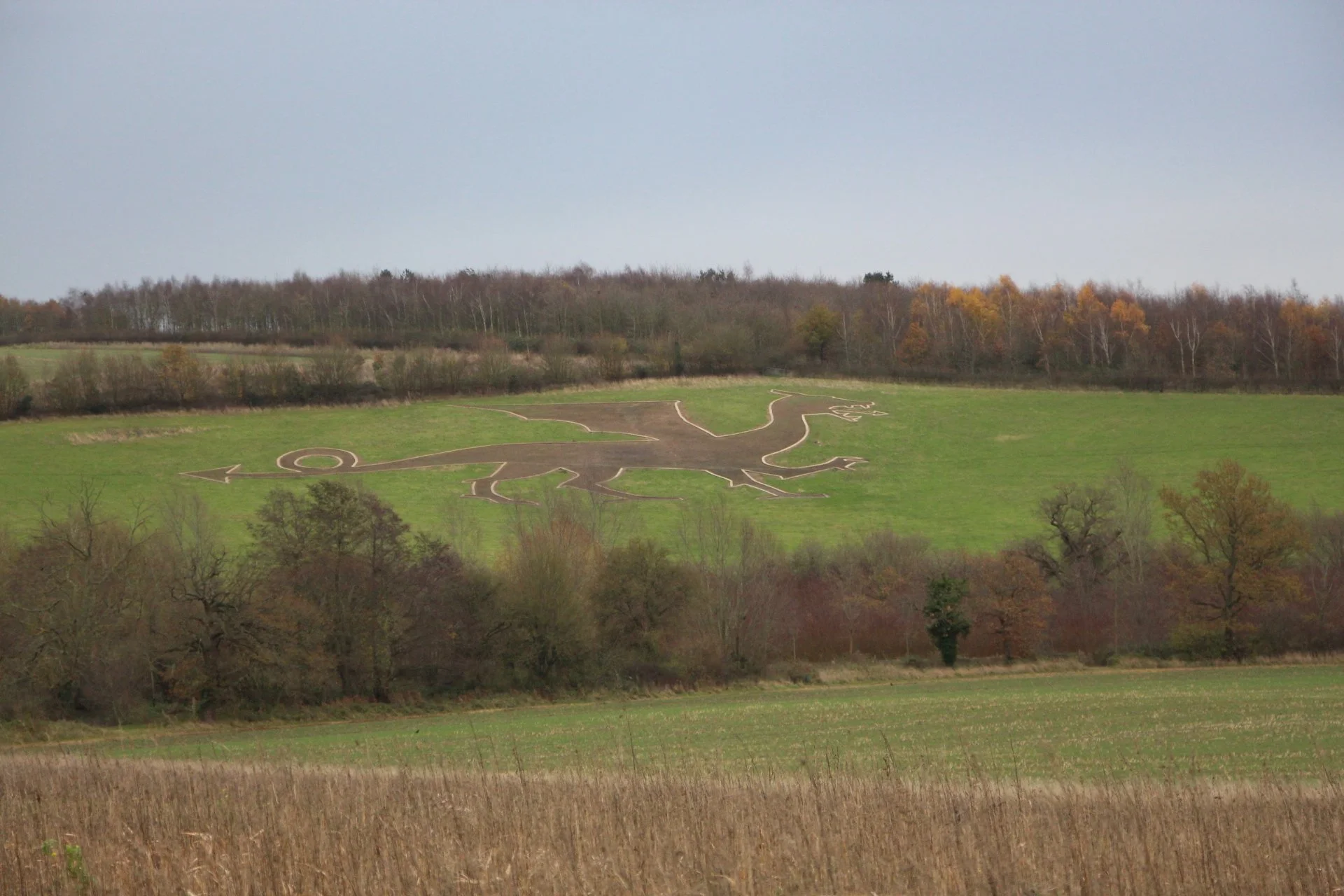
Along my favourite stretch of the Stour sits St Mary’s Church in Wissington a simple but not uninspiring church that has been in existence since 1135 and in its time no local family has dominated the church unlike the Spring Family in Lavenham or the Soame’s in Little Thurlow and has been cared for over the centuries by local parishioners, which is probably the appeal to me, the beauty of the church is its simplicity without the need to dominate the skyline nor show ones wealth and generosity.
Inside this church as soon as you enter is a striking mural of the Dragon, a legend that dominates this stretch of the Stour from Sudbury to Wissington the story of the Dragon is a remarkable legend that has grown over centuries and one that still intrigues me, such is the influence it has seen a village change its name, depict the creature by carving it into the valley, become a version of George and the Dragon and draw murals as striking as the one within St Mary’s.
The Murals in St Mary’s were created by local craftsmen in the 13th century and the dragon came later in the late 14th century, painting over an earlier painting which does not please the experts, St Francis is on the opposite wall feeding the birds and this is believed to the the earliest representation of St Francis in English art! Unfortunately the walls were to be whitewashed during the reformation and not seen again until the 19th century which is criminal, when they were uncovered in the 19th century and recorded they were recovered because it was believed they would distract the congregation and the chap who did it had a point!
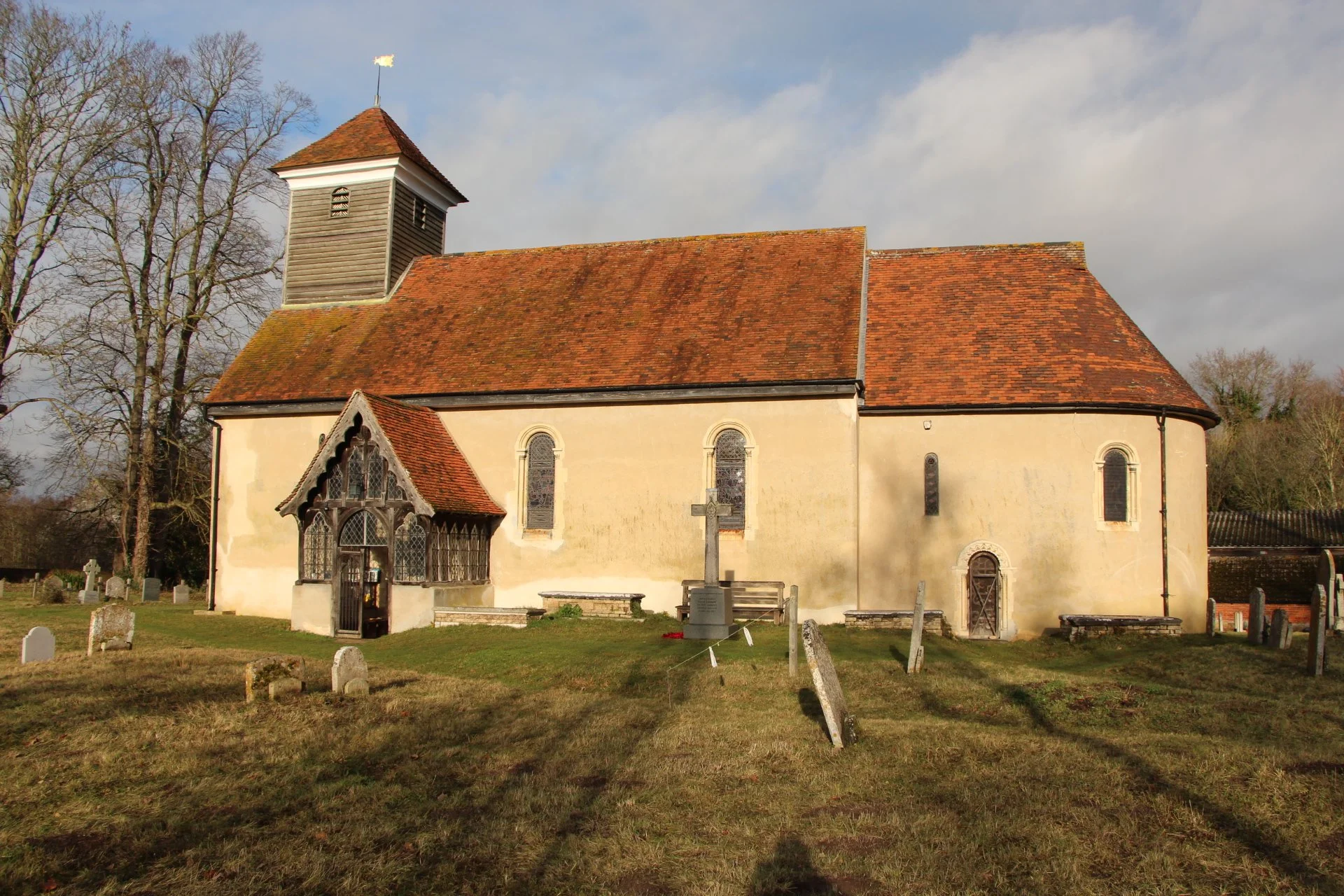
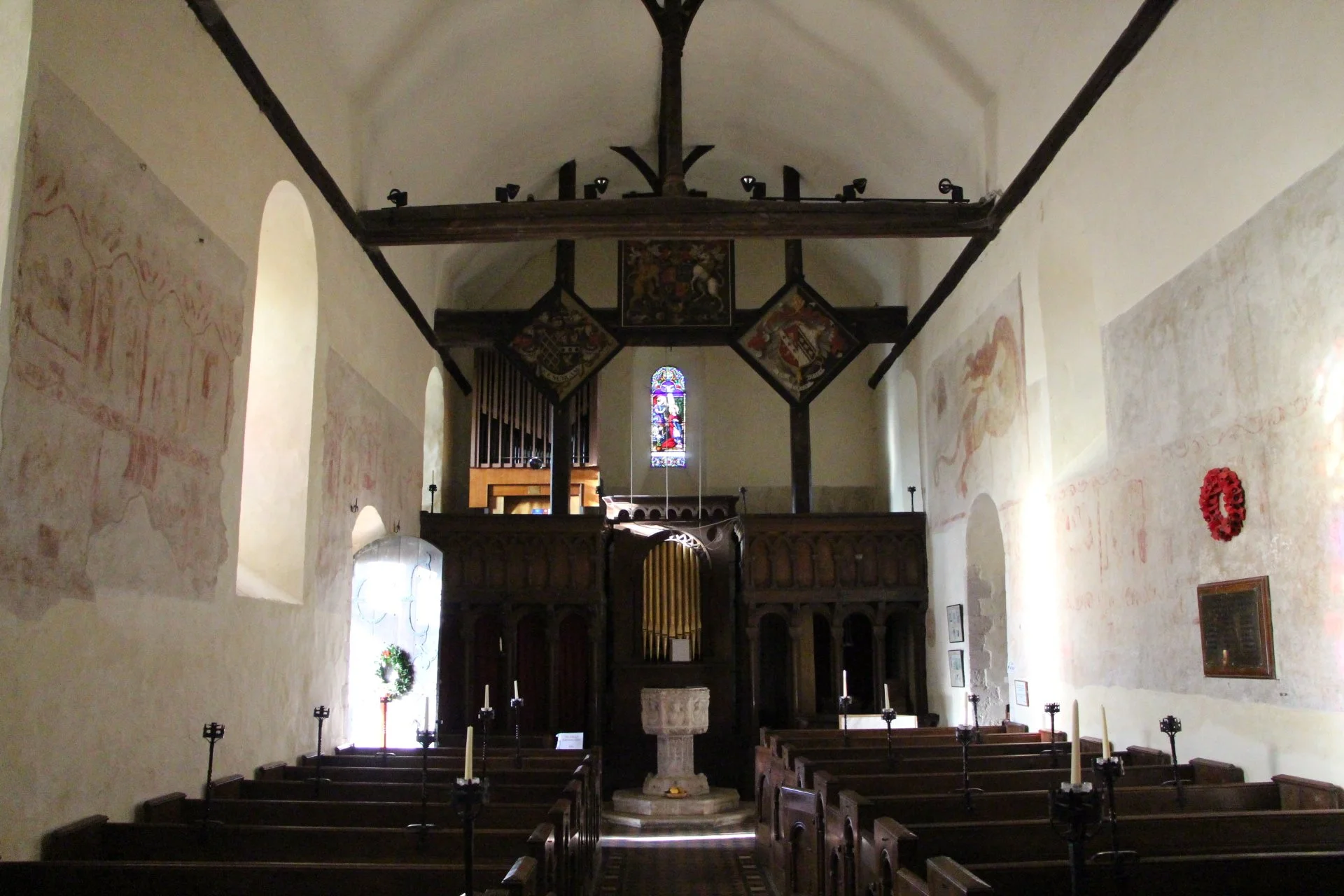
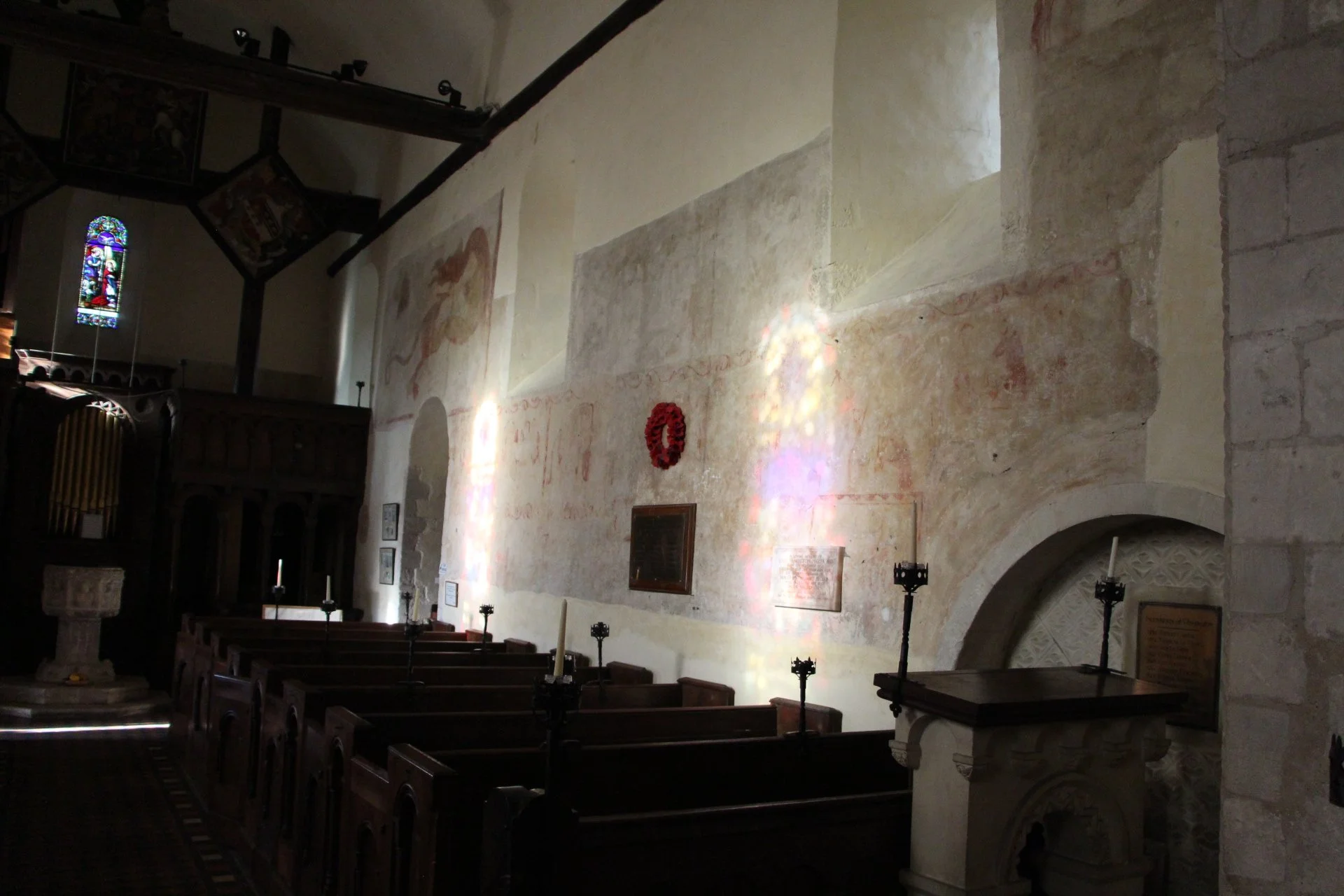
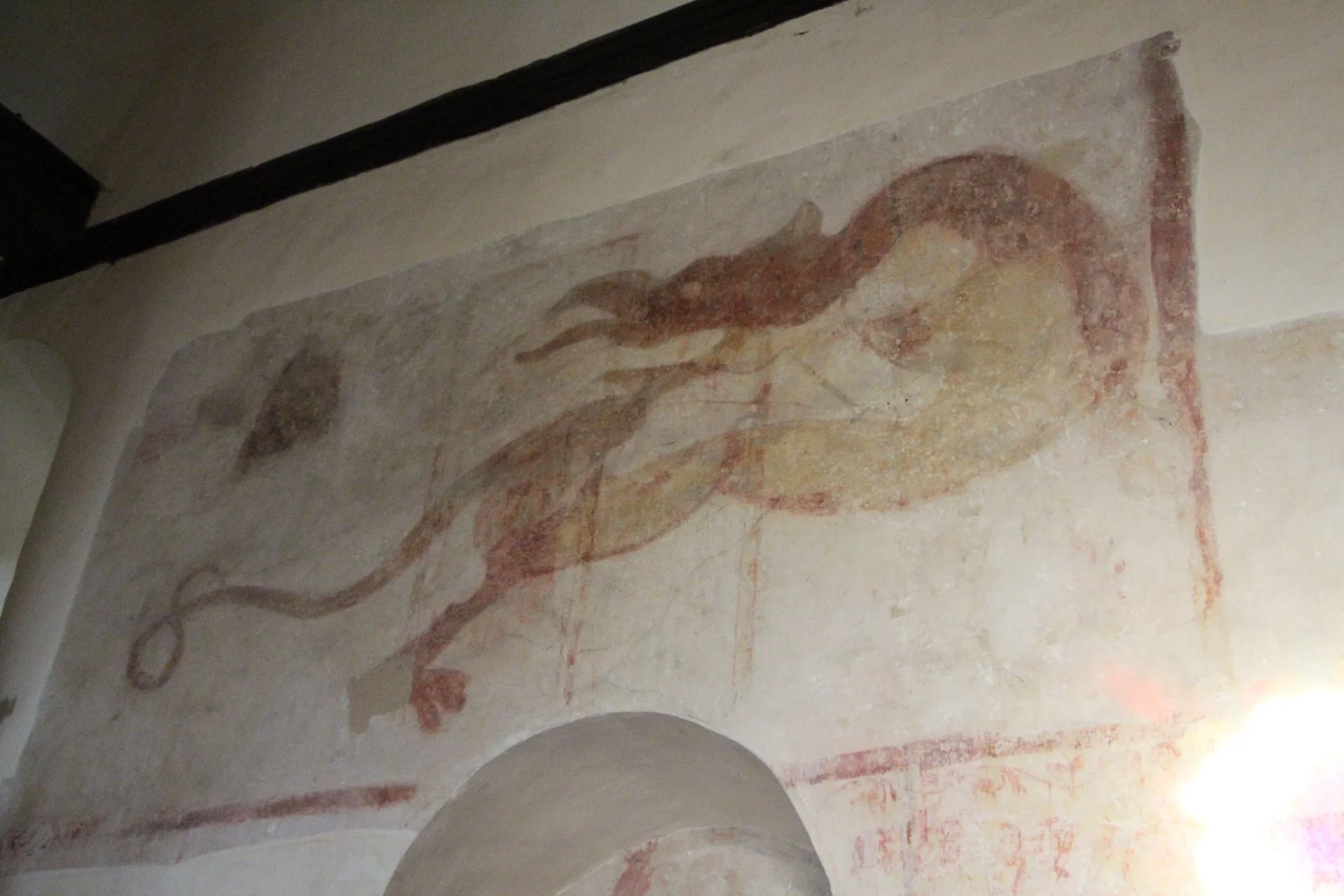
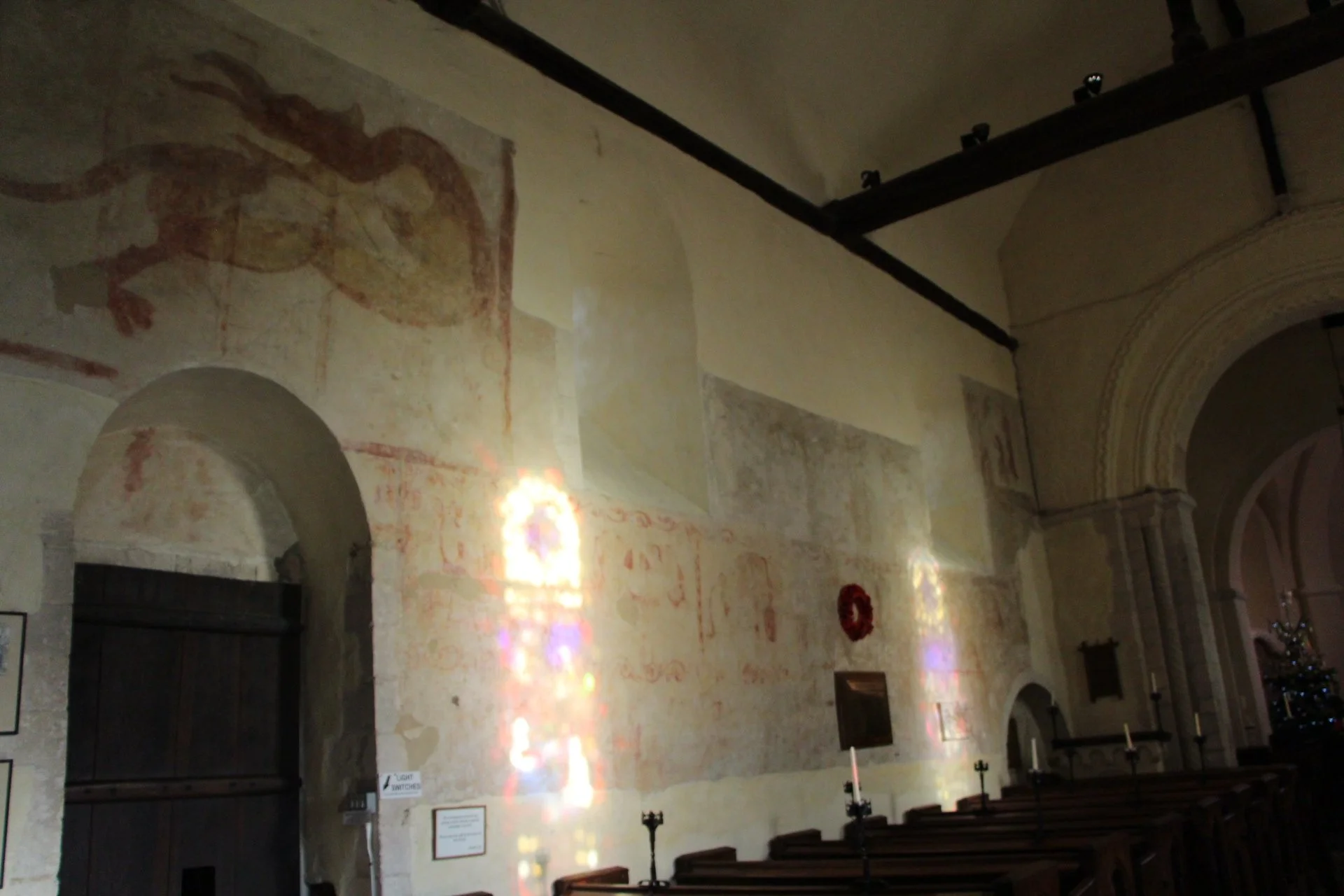
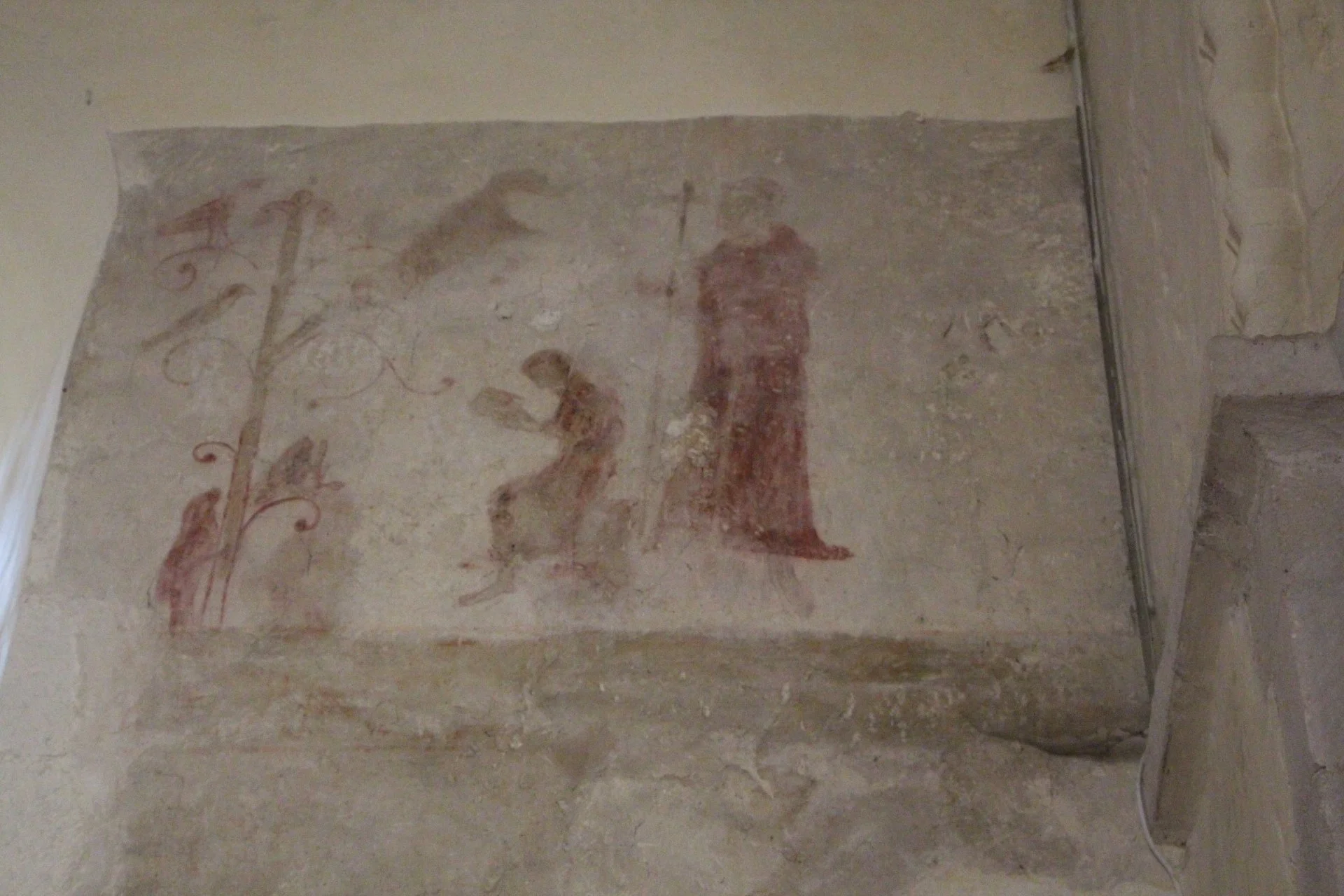
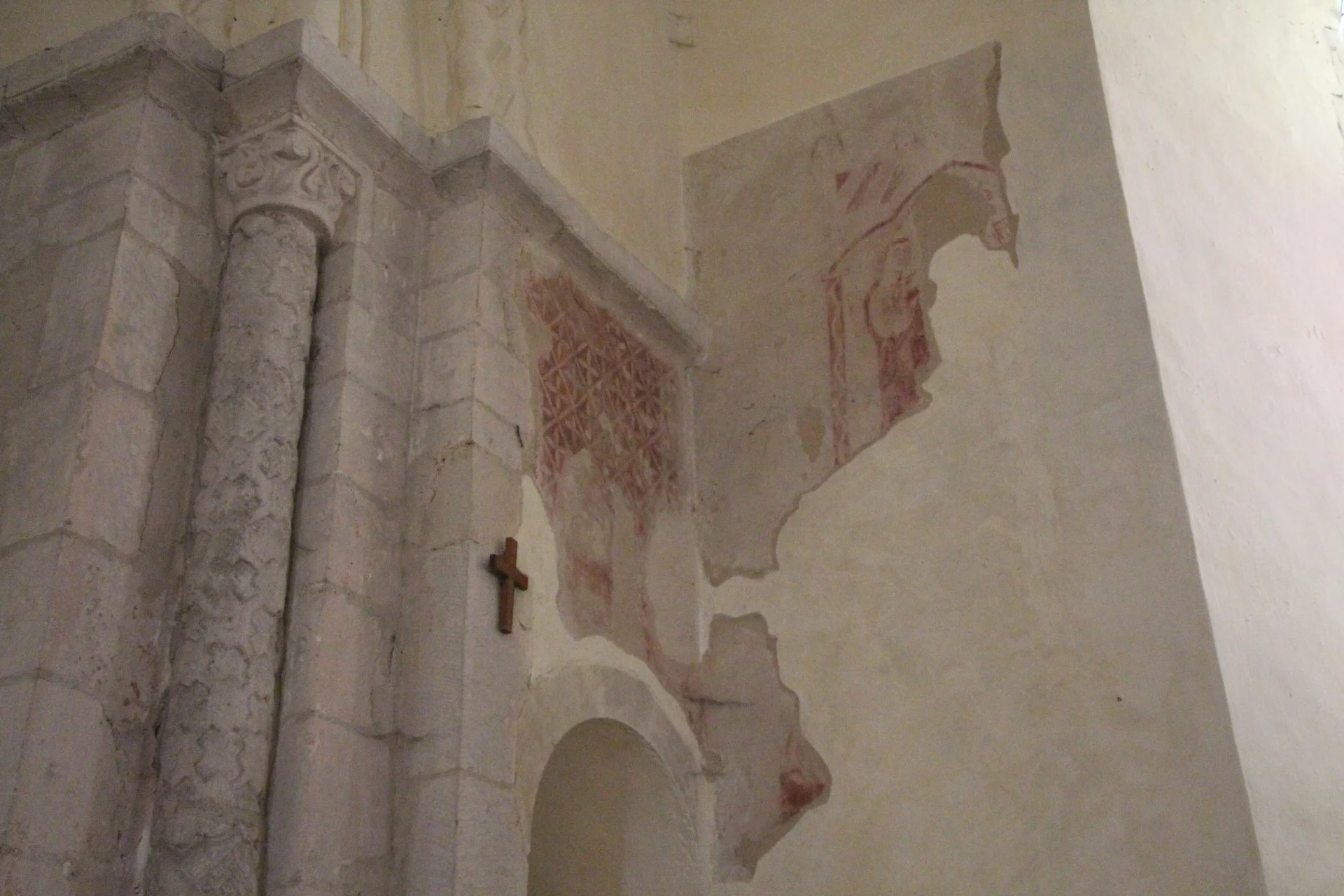
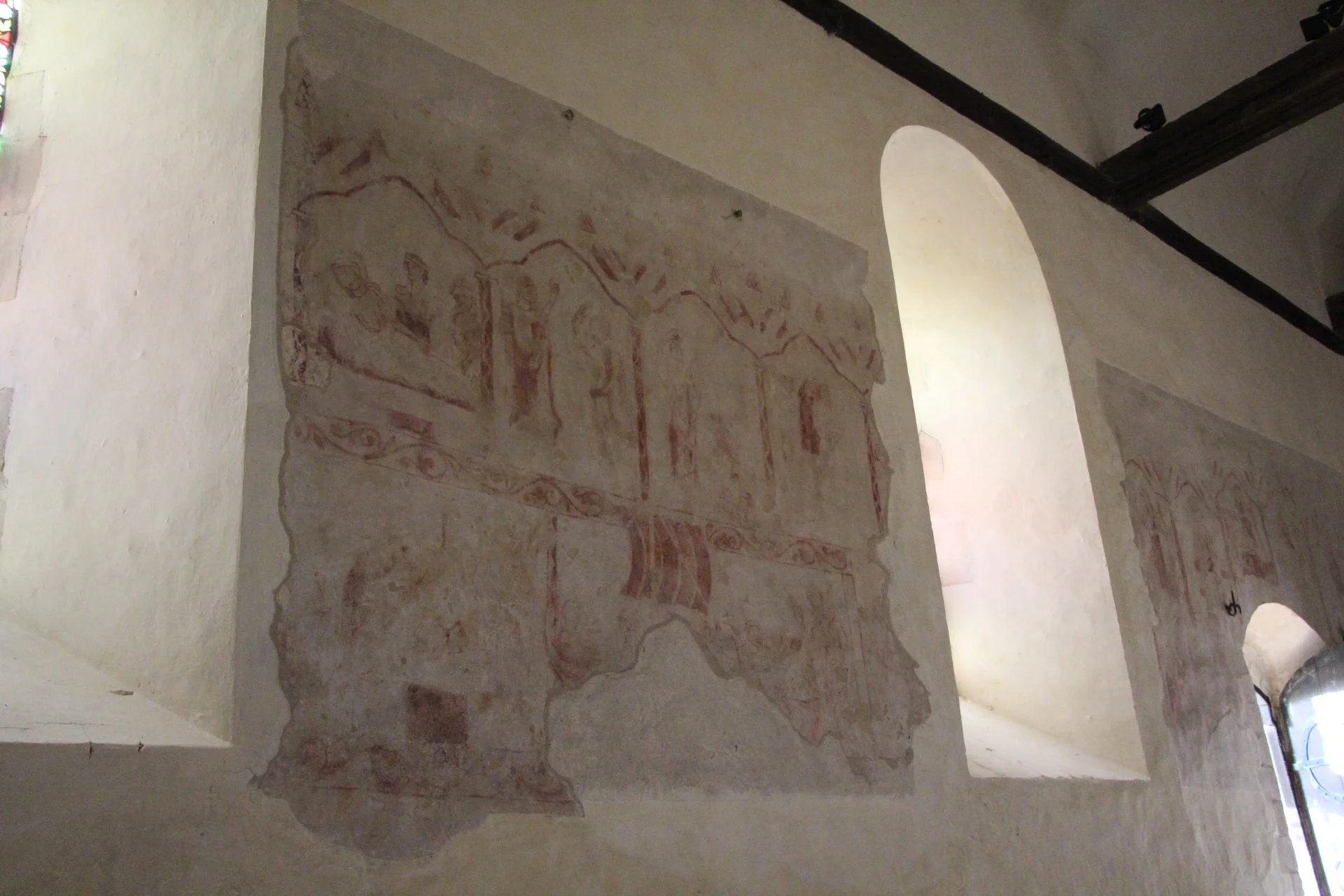
Further up river is Wormingford, where the last sighting of the Dragon was seen, on the hill that overlooks the valley is the village church of St Andrew a 12th century building, like Wissington church it is very unassuming and serves a much larger parish and home to my football club Wormingford Wanderers!
Originally called Withermundford, then wormiton, wormington, now Wormingford after the legend, ‘Ford of the worm’ , the dragon was last seen here and disappeared into a mere off the river, near Smallbridge Hall.
Inside the church is a depiction of the Dragon, however this is as a crocodile which is the most likely theory of what the creature was, an escaped crocodile from Tower of London that belonged to the King of England who was gifted a ‘Dragoun’ while abroad and brought it back to England.
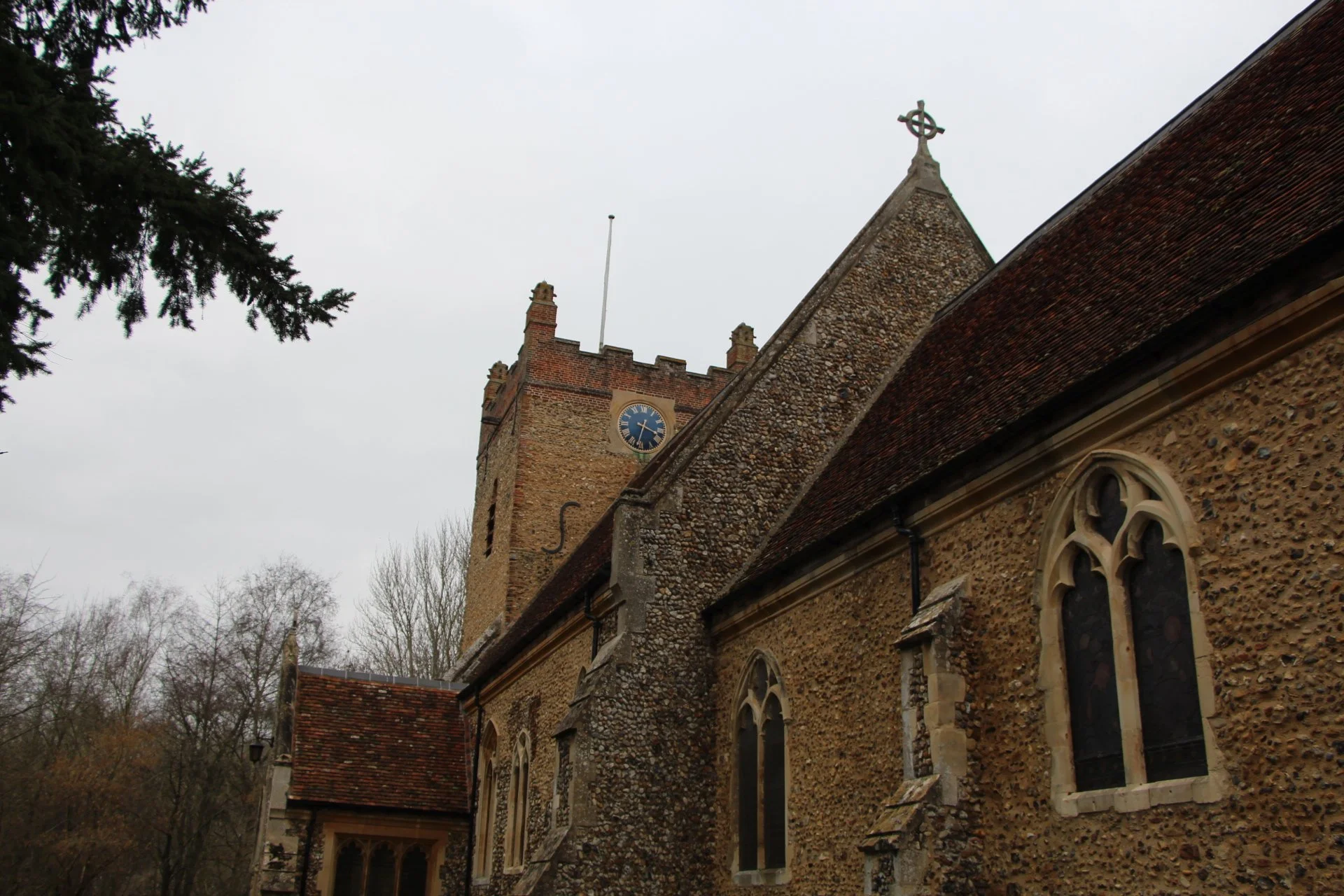
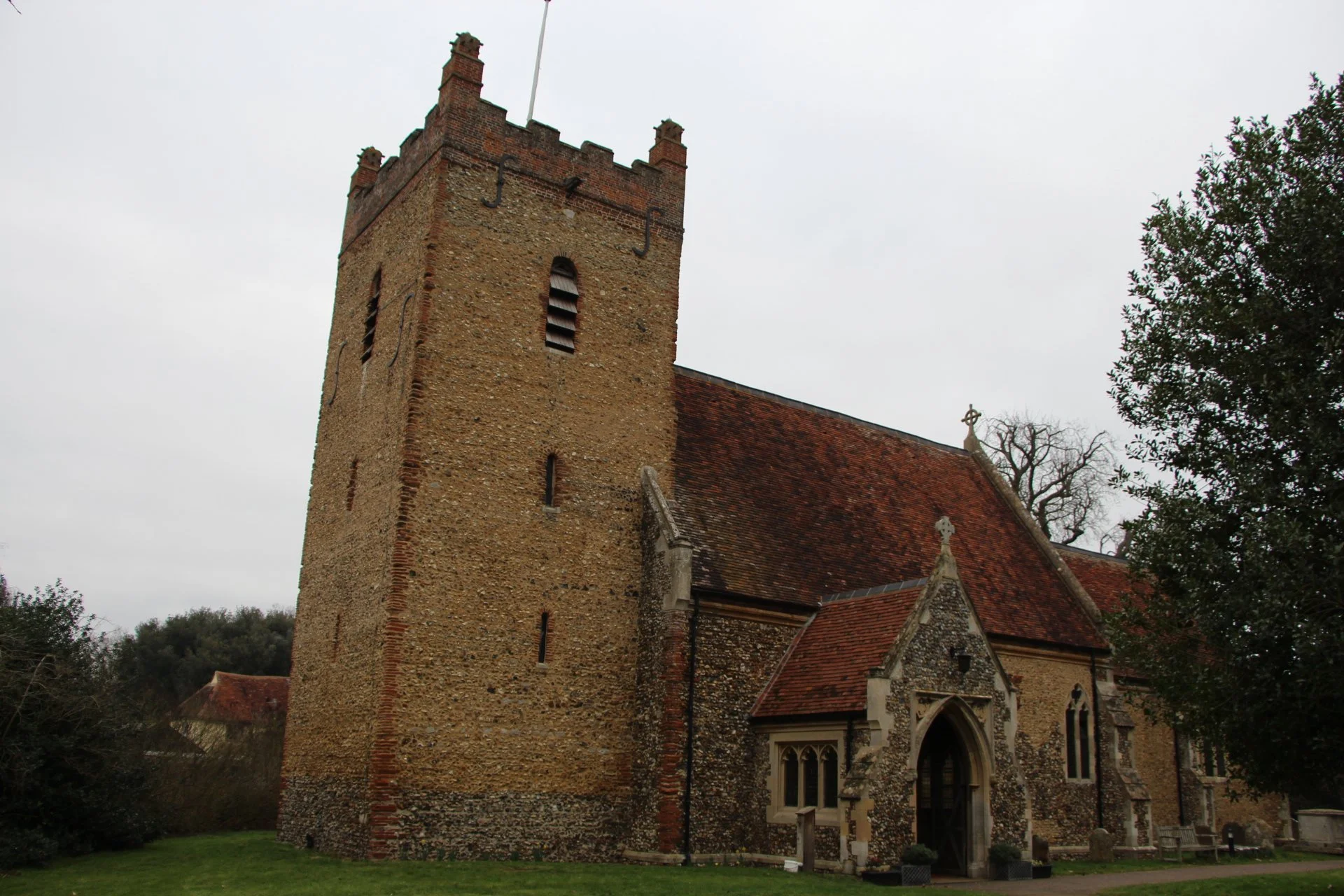
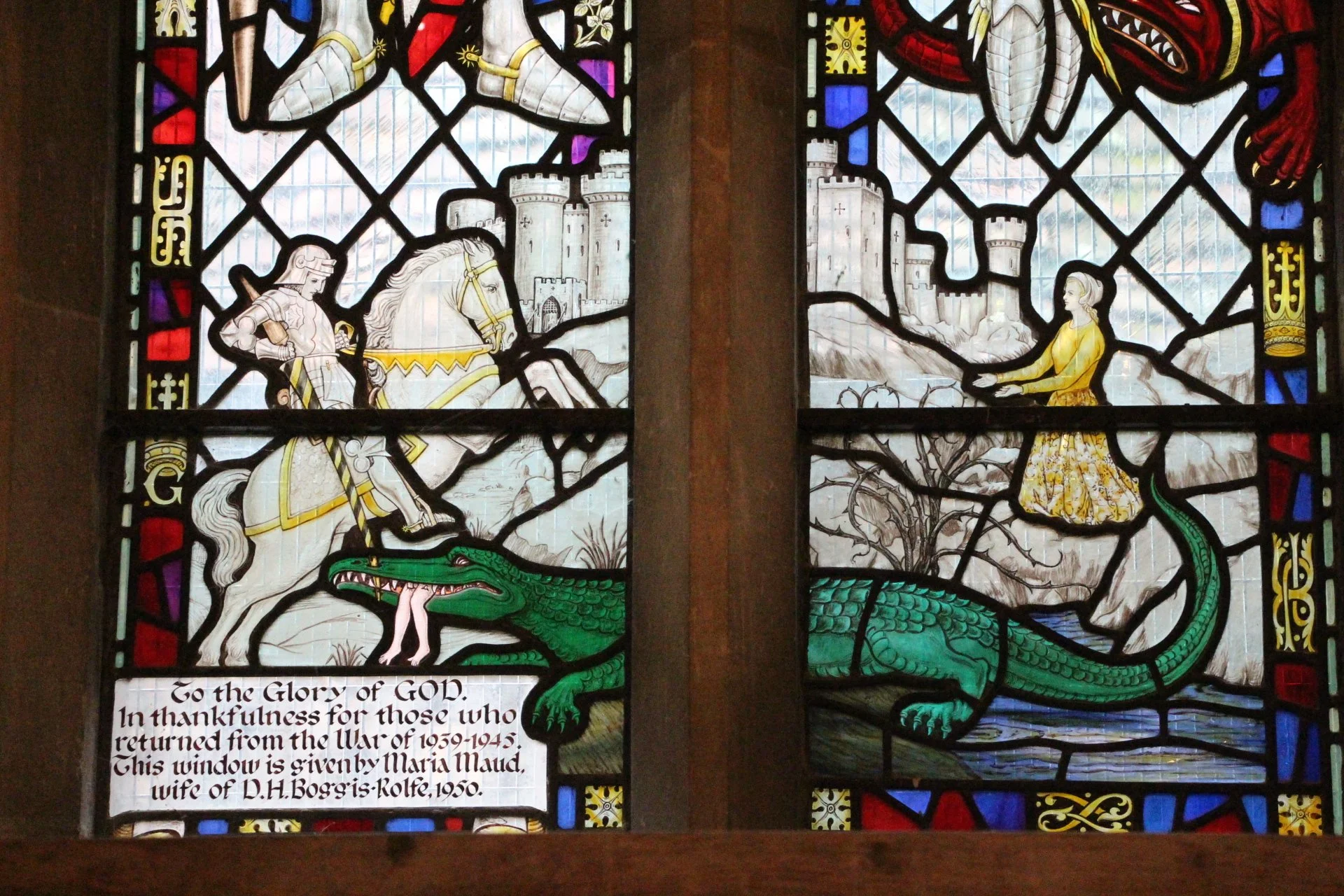
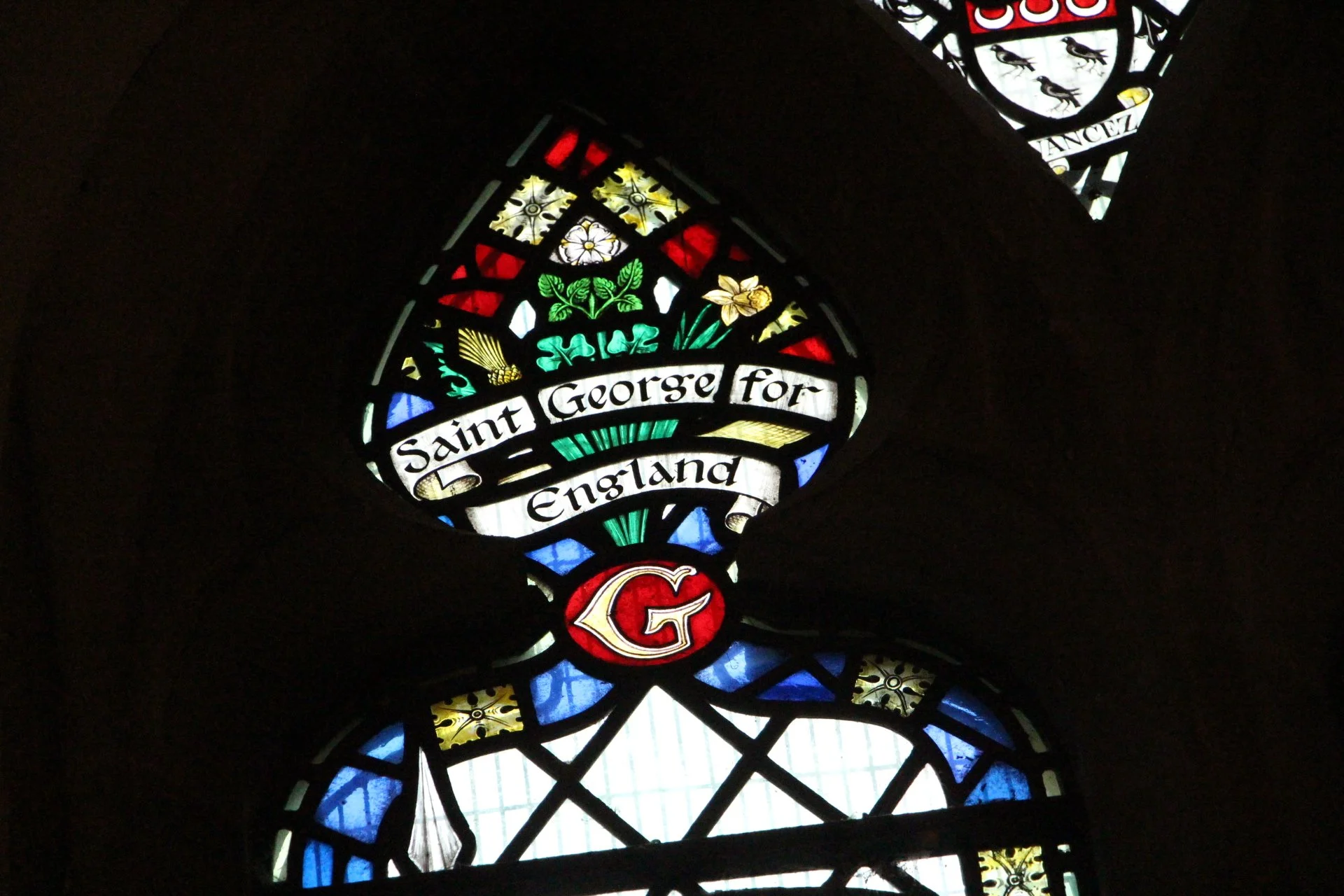
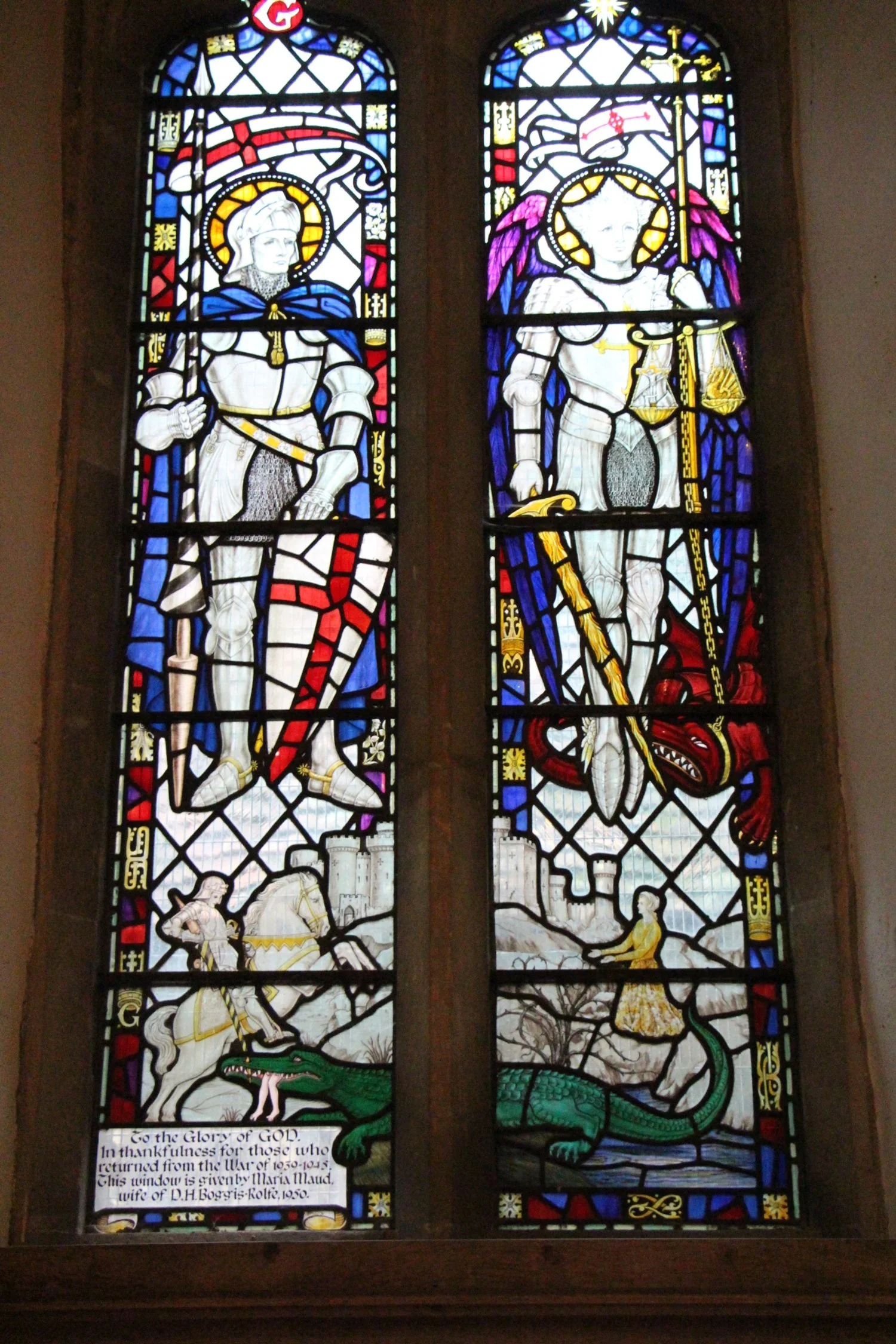
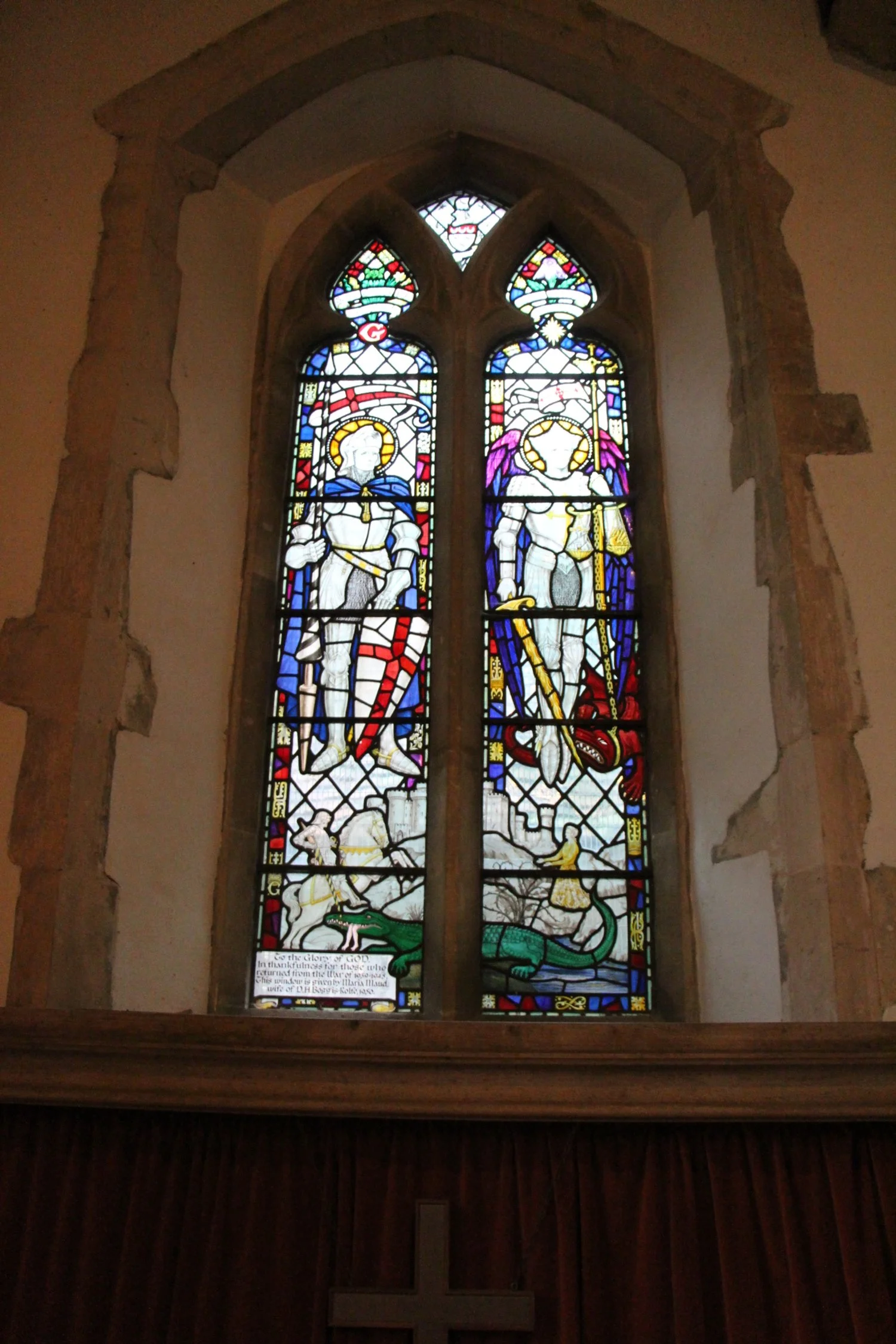
An Article from the East Anglian Daily Times in 1976
It was on a spring day in the year of 1405 that the town of Sudbury, busily going about its affairs,
slowly but surely became engulfed by a wave of panic. Word was spreading that a horrific and fearful sight had been witnessed down on the banks of the River Stour. According to several reliable townsfolk, who had seen it with their own eyes, an enormous monster had emerged from the water and was breathing fire in the general direction of anything that moved.
As people fled to the north side of the town and doors and shutters were bolted, several brave and resourceful fellows decided that the town must be protected.
Armed with bows and arrows they cautiously approached the riverside, and proceeded to fire upon the strange creature. And, although their arrows made little impression - merely bouncing off its tough skin - they were successful in that the beast became agitated enough to return to the water and retreat downstream in the direction of Bures.
The event became the talking point of the town for many days, and the townsfolk eventually logically concluded that as they had never seen anything remotely resembling such a monster as this, it must have been a dragon containing the spirit of the devil.
Horror
Word spread of the alleged dragon's presence in the river and villages downstream from Sudbury were made aware that they may receive a visitation.
Sure enough, to the horror of the village of Bures, the "dragon" suddenly appeared at the top of an area called "Clappits", which is probably the site of the present Claypits housing estate.
A shepherd and most of his flock of sheep were killed by it as it apparently made itself at home in the grounds of Smallbridge Hall, which was then owned by Sir Richard de Waldegrave. The men and boys of Bures, again armed with bows and arrows," made an all-out assault on the intruder, but again failed to seriously harm it because their arrows merely bounced' off its tough, scaly skin.
They retreated and much discussion was had in the village on how to get rid of the dragon, which by now appeared to have no desire to continue downstream.
Eventually the entire populace from miles around were summoned, and, gathered together they approached the beast. On seeing the oncoming crowds, who were fully armed and more than a little noisy, the dragon apparently decided to flee.
Hearty
It was seen to hurriedly make its way, overland and on foot, to the village of Wormingford, where it plunged into a mere, never to be seen again. One version of the story has it that the bowmen who had made the attack at Bures, retired to the Eight Bells public house to enjoy a hearty meal of the sheep which had been conveniently roasted on a barbeque by the dragon's fiery breath. The only account to survive that was actually written at the time appears to be contained in the chronicles of Monk John de Trokelowe, his writing was, of course, all in Latin and was later translated into English The monk writes, in a remarkable matter-of-fact style, that the creature was "vast in body with a crested head, teeth like a saw, and a tail extending to enormous length." Of the attempted slaying by the locals he observes, ". . . the dragon's body, although struck by the archers, remained unhurt, for the arrows bounced off his back as if it were iron or hard rock." "Those arrows that fell upon the spine of his back, gave out as they struck it a ringing or tinkling sound just as if they had hit a brazen plate and then flew far away off by reason of the hide of this great beast being impenetrable." The Monk's account concludes with the statement that the dragon fled into a mere and was never seen again.
The mere in question is that in the grounds of the present Wormingford Hall. A further tale has it that there is still from time to time, a mysterious bubbling in one corner of this mere, allegedly resulting from the presence of the Devil, who lives there in the form of the beast. On the wall in Wormingford Church, however, is a 500-word legend that suggests the dragon was slain where Wormingford Grange now stands by a dashing knight called Sir George of Layer de la Haye.
This, of course, has led to speculation that the famous "George and the Dragon" legend springs from this particular incident. The legend hangs in the church beside a stained glass window which depicts a knight in armour on horseback attempting to kill a creature resembling a crocodile. The legend reveals that the King of England, while abroad was given a beast, called a "dragoun", and that he ultimately brought it to England where he kept it in the Tower of London.
From here it is alleged to have escaped and disappeared without trace, despite proclamations and offers of reward. The legend continues, "Time passed and swimming, crawling, ravaging, it found its way to that small settlement on the banks of the Stour, then called Wither-mundford."
The Challenge
"The few natives were terrified at the new arrival and a rumour spread among them that it could only be pacified with human sacrifices and so virgins." Apparently the supply of virgins in Withermundford (now Wormingford) soon ran out and the dragon could no longer be pacified. So the natives, at their wits end, sent for Sir George of Layer de la Haye, the Son of the Earl of Boulogne, who bravely took up the challenge to slay the beast. "Sir George chased the I dragon, which really put up a poor fight and slew it, according to tradition, about where the Grange now stands," says the legend. It adds that the killing may have taken place in the field that has always been known, for no obvious reason, as the "Bloody Meadow."
Today, most believe the beast was in fact, a crocodile - it was then called a dragon because this was what the simple, uneducated natives genuinely believed it to be.
The Creature
Whatever the nature of the creature, the evidence of its visit is certainly substantial. For instance, after the event the village of Withermundford even changed its name, it became Wormiton, then Wormington and, finally, Wormingford, which means "ford of the worm". The belief that the creature was in fact a crocodile. "It is quite probable, from the monk's description, that the "Dragon" was a crocodile which had escaped from its keeper." Although the modern memorial window in Wormingford Church depicts the creature as a crocodile the one in nearby Wiston Church illustrates a creature that is far more dragon-like.
So, in the meantime, the legend lives on, with the details of what actually happened becoming more horrifying and unbelievable each time the tale is told. But, of course, this is the way of all legends worth their salt and the story of the Stour Valley Dragon is certainly no exception.
Courtesy of Robert Hadgraft – East Anglian Daily Times – 19th of August 1976